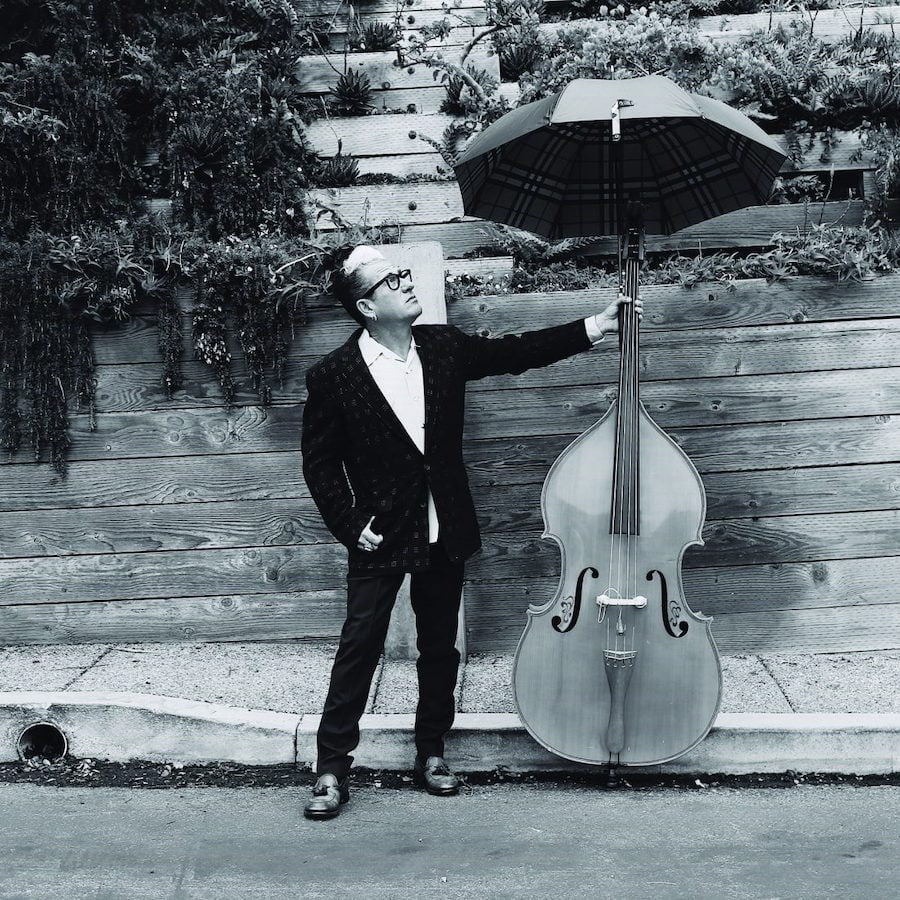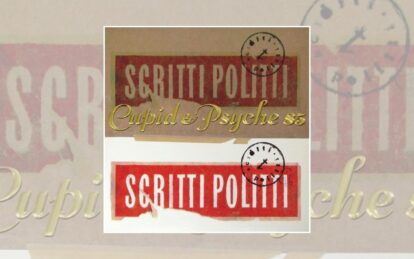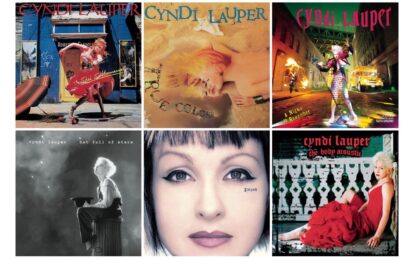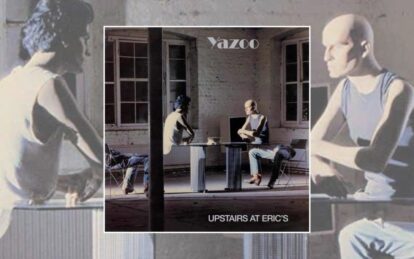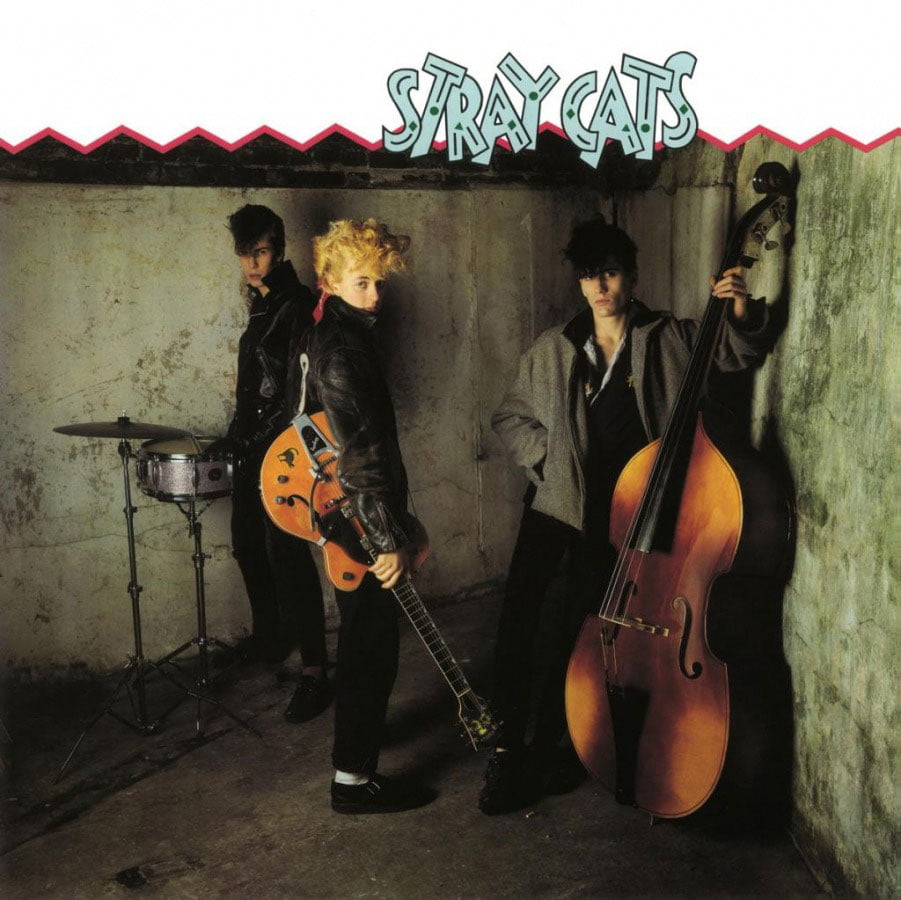
In 1980 the British rockabilly revival was primed, ready and waiting for somebody to light the touchpaper – and Stray Cats fitted the bill. Classic Pop pays tribute to the punky trio who caused a rock’n’roll explosion. By Jack Watkins
In 1983 Barney Hoskyns wrote an article on the Stray Cats for the NME. The band was riding the crest of the wave in the US, but record sales in Britain, where they had enjoyed their first major success, had levelled off. Hoskyns pointed out that it was almost exactly 23 years since one of the Cats’ heroes, E
ddie Cochran, had met his untimely end while on a tour of England, and he wondered whether, in decades to come, the country would still be cherishing memories of the boys from New York with similar warmth.
Old school Teds might disagree, but Top 10 hits like Runaway Boys and Rock This Town have now entered the canon of rockabilly greats. And you can carve in stone the word ‘classic’ next to their debut album Stray Cats, released in 1981.
In its own way, that LP was as raw, naïve and uncalculating as the work of the first-generation rockers in whose footsteps, without overdoing the awe, they so ably trod. Even more remarkably, they were signed to major record label Arista at the time. Can you imagine an equivalent company putting their weight behind such an album today?
Accounts of the 1980 rockabilly revival usually head off with admiring references to Stray Cats, but a little rewind is in order to pay credits due to the rock’n’roll scene that already existed in Britain when the band arrived in London in the summer of that year.
Not only were there many good groups playing to enthusiastic, well-informed audiences on the club and pub circuit, but Matchbox had already had a steady run of UK pop chart success with singles like Rockabilly Rebel, Buzz Buzz A Diddle It, and Midnight Dynamos.
Shakin’ Stevens had also registered in the Top 30 with Hot Dog and Marie Marie, and Crazy Cavan And The Rhythm Rockers were churning out a stream of fine albums for Charly Records.
So rockabilly was already bubbling over into the British mainstream. All that was needed, nearly everyone agreed, was some energetic new band who could really seize the imagination of the nation’s youth. That band was to be Stray Cats – a trio made up of Brian Setzer on vocals and guitar, Slim Jim Phantom on drums, and Lee Rocker on bass fiddle.
They’d cut their teeth on the club scene of Long Island, New York, before graduating to the trendier bars of Manhattan. Slim Jim had learnt to play drums from Mousey Alexander, who’d worked with jazz greats like Benny Goodman, Bud Freeman and Sy Oliver.
Both he and Lee, whose parents were acclaimed classical musicians, had played together in a band before hooking up with Brian, two years their senior.
Quizzed on his influences, Setzer would reel off a string of names going all the way back to Charlie Christian. When you peered beyond the poses and the obligatory rock’n’roll lifestyle excesses, you could see this band took their music seriously.
Their back story was a marketing man’s dream. Having honed their chops and grown their audience in New York, they’d taken the step of crossing the Atlantic because they felt their songs would be more appreciated than in the US, where the name of Gene Vincent was almost forgotten.
But for a few weeks things were so tough the Cats were forced to sleep on the floor of a music publicist’s in Soho while he got them some gigs.
The dates that followed, from Camden’s Dingwalls to the underworld haunt of the Thomas A Becket pub on the Old Kent Road, showcased the tough energy of their act, and the fact that many older rockers, from Keith Richards and Mick Jagger to Chrissie Hynde and members of The Clash, were often to be seen in the audience, crystalised a growing reputation.
The key rock contact, however, was Dave Edmunds, who would produce their debut album. “There was a bunch of names that were being batted around to produce us once we got the contract with Arista,” recalls Slim Jim.
“Mick Jagger and Keith Richards wanted to do it, but that was going to be difficult to organise, whereas Dave had been following us a bit, and expressed a wish to produce us. We’d been to his house, where he had a basement made up like a pub with a jukebox. We just thought he was a cool guy.”
Edmunds would produce eight of the 12 tracks that comprised Stray Cats, which was cut very quickly, to “strike while the iron was hot,” in Slim Jim’s words. The first song they recorded, album opener Runaway Boys, was rushed out as a single in November 1980.
Co-written by Setzer and Slim Jim, the song had climbed all the way up to No.9 in the singles charts over Christmas, guaranteeing national TV exposure time during the festive season.
It’s hard to convey the impact of seeing and hearing the Cats for the first time. There was, of course, the look, especially the bouffant quiffs. Setzer was blond and blue-eyed, like a “demented Renaissance cupid,” as Barney Hoskyns put it.
Slim Jim was tall and angular, wore huge earrings and, despite his off-stage friendliness, looked quite fierce. Lee Rocker was more laid back, twirling an enormous double bass beneath dark, broody eyes.
But the look was nothing next to the sound of Runaway Boys with its incredible sparseness and heavy slapback echo. After years of skinny, screechy guitars, Setzer, with his Gretsch 6120 hollowbody, reintroduced a rich, chunky sound lost since the 1950s.
Jim’s crisp staccato snare seemed to sit on top of the beat, his pared-down approach reflected in a minimalist drum kit consisting simply of snare, bass, and cymbal. Strangest of all was the monster rumble of Lee Rocker’s bass, supplying a shuddering, recurring riff throughout the track.
Rockabilly anoraks might have noticed how Setzer deployed a tiny back-of-the-throat Eddie Cochran stutter on the reprise of the first verse, but this was no slavish tribute act. It was rockabilly alright, but with a punkish attitude.
Side 1’s closer, the Setzer-penned Rock This Town, wore its roots a little more conspicuously than Runaway Boys, which is possibly why the Rock And Roll Hall Of Fame placed it in among the 500 songs that helped shape the genre, but all the components of the Stray Cats sound were there. Their second single, it followed its predecessor into the UK Top 10.
The Stray Cats live show around this time mixed revivals of old songs with new originals. The oldies included Jeanie, Jeanie, Jeanie, a tiny hit for Eddie Cochran in 1958. Setzer’s introduction of an expletive into the lyric prompted a threat of court action from the song’s publishing company (the matter was settled out of court).
A lively version of Warren Smith’s old Sun single Ubangi Stomp had jungle warrior cries and hair-raising screams from Slim Jim. “Those screams came from our love of Gene Vincent And The Blue Caps,” remembers Slim Jim. “That was the way Gene’s drummer Dickie Harrell used to scream.”
Another vintage track was Double Talkin’ Baby, a song Danny Wolfe had written for Vincent, with a clean production providing the perfect setting for some scintillating guitar runs from Setzer, following in the footsteps of Vincent’s best-loved guitarist Cliff Gallup, but stepping up the tempo.
Wild Saxophone showed how far deeply the Cats were prepared to dig back into rock’s heritage. The song had originally been recorded by Fats Domino guitarist Roy Montrell as (Every Time I Hear) That Mellow Saxophone at Cosimo Matassa’s J&M Studio in New Orleans 1956.
It also showed they were never intended to restrict themselves to pure rockabilly. It was one of several tracks they produced themselves, which tended to showcase their more contemporary influences.
But Stray Cut Strut, another Setzer-penned song, showed as the lyric said, that they’d “got real class and got real style”. It was their last big hit in the UK, but was an even bigger seller when they eventually broke through in the States.
As an album, the absence of gimmickry on Stray Cats is one reason for its abiding appeal, reflecting a quality going to the heart of why people are still attracted to rockabilly today. Slim Jim gives much credit to Edmunds. “Although we were an ‘overnight sensation’ in London, we’d already been at it for a year and a half in New York. We knew we could play very well.
“But making a record was different. I would never have known, for instance, how much echo to put on a snare drum. Edmunds never told us how to play. Maybe he’d say: ‘I think there’s another take in you, try again,’ but he knew we had our own sound and that we knew what we were doing. He just recorded us and then worked his magic from behind the window.”
Magic is the only word; Stray Cats is still casting its spell 41 years later.
Lee Rocker on Stray Cats
In midsummer 1980, Stray Cats were splashed over the cover of the NME before they’d even entered the studio. But could this striking trio cut a record to match the hype? Bassist Lee Rocker remembers it all…
Is it true that you cut Stray Cats in under two weeks?
Absolutely. It’s something I have a very clear memory of. We cut it in 11 days, really rapid and virtually live for the
most part. Maybe overdubs on a couple of vocal and guitar parts, but the vast majority was us going into the studio, setting up and playing like we’d do in gigs. Dave Edmunds was really aware of the need to capture the energy and sound we had, and not trying to make something different for the record.
Stray Cat Strut was a song you’d already had while you were still in New York…
Yes, that and Rock This Town and Rumble In Brighton. The band took off so quickly in every way when we came to London, but what a lot of people don’t realise is that in New York from around December 1979 up to our departure for England the following summer, we’d gone from a handful of people at our gigs to lines down the street at these venues. We were already a well-oiled machine. And Stray Cat Strut was a song that was there pretty much from the start, from when we rehearsed in my dad’s garage. It has an almost classic, jazzier take to it. It was rockabilly, but with another dimension. It was our calling card in some ways.
Did the band choose all the songs on the album?
Yes, it was all the stuff we were doing live. That record is an exact representation of what we were doing at that point. The old songs came from us going down to Greenwich Village and haunting these little shops which had boxes of vintage albums. You’d dig through, and if the cover was cool and the guy had a guitar and a good haircut then you’d buy it for a dollar, bring it home and see what was on it. But some songs we just enjoyed listening to and didn’t necessarily incorporate into our show. We liked Ricky Nelson’s My One Desire because it had a great groove to it, and we were looking for something with a different pulse to it, to get a variety of tempo, groove and feeling.
Do you have a favourite track?
I’d probably have to say Runaway Boys, the first one we tackled when we went in the studio with Dave Edmunds. It’s the biography of the three of us, summing up the way we felt, but it also sums us up musically. It was a song which, although it was a rockabilly track, would never have been recorded earlier.
The power of the bass fiddle underpinning that track is unbelievable… how did you get that particular sound?
It came after a lot of experimenting with different strings and pickups. Although we recorded the album in 11 days, we probably burned at least one working on bass tones and sound. I was using basic electric bass guitar and magnetic pickups screwed onto the neck. Dave said: “Why don’t we use gut strings?” but we eventually realised you couldn’t do that. These days, of course, you wouldn’t even think about that… I mean, of course it’s not going to work, you know? But everything was so new back then. So in the end we used steel strings with magnetic pickups, and that was part of a sound that was a hybrid of punk, rock’n’roll and rockabilly.
The way the drum and bass sounds combined was also unusual…
Yes, instead of being sort of underneath the track, the drums came through on top of the bass. We were always explaining to the sound men that the bass needs to lead the bass drum as opposed to what happens with a lot of rock and metal bands where you’ve got the big ‘boomff’ on the bass drum, and the bass guitar just fits onto that.
On Double Talkin’ Baby Brian’s guitar playing is phenomenal, and much faster than the original…
Yes, but on the album we were actually settling it back a little from how fast we played in the live shows. Looking back at some of the old footage, we played everything double time. In a 35-minute show we’d play around 15 songs, so on the album we actually pulled it back somewhat!
Classic Pop may earn commission from the links on this page, but we only feature products we think you will enjoy.

